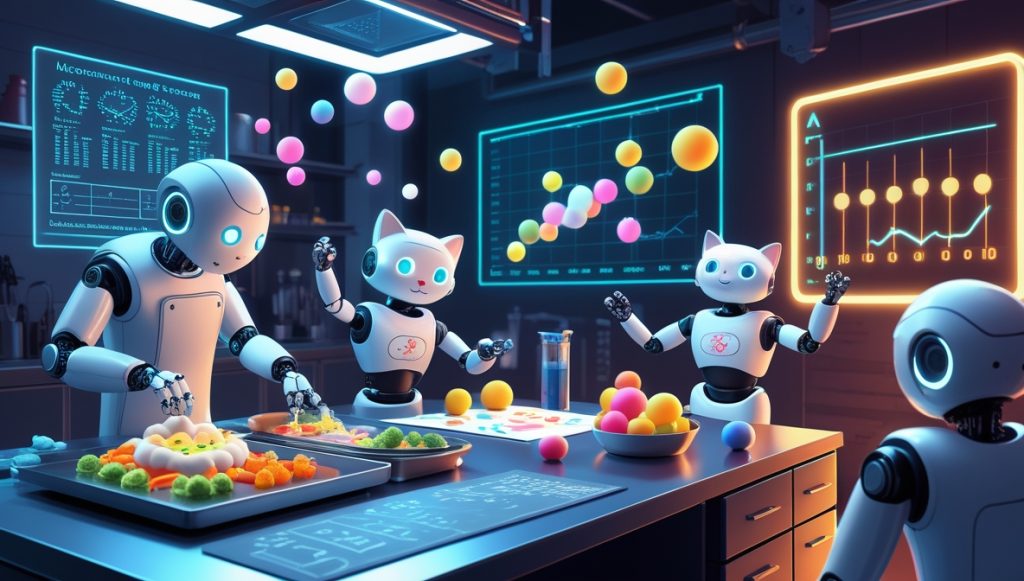
Introduction: Unsupervised Learning, Like Curious Kids!
Imagine trying to learn cooking without a recipe book or a teacher. You just watch random cooking videos and guess how to sauté onions or knead pizza dough. Self-supervised learning works the same way! AI models here act like curious kids, trying to uncover patterns from unlabeled data (like those videos). But how do we know if the model actually learned anything?
This article breaks down key evaluation metrics in simple terms, using relatable examples—from “reconstruction errors” to “contrastive games”!
Evaluation Metrics: From the Kitchen to AI
1. Reconstruction Loss: The Forgetful Painter Model!
What is it? Imagine giving the model a cat photo. It compresses the image and tries to redraw the cat from that compressed version. Reconstruction loss measures the difference between the original cat and the model’s doodle!
Real-World Example: Models like DALL-E, when given a prompt like “a cat in a red hat,” generate images. If the output has three legs or a floating hat, the reconstruction loss spikes!
When to use? Ideal for projects focused on generating new data (images, text, etc.).
2. Contrastive Loss: The Data Grouping Game!
What is it? Picture the model at a party, grouping people by interests: similar folks stick together, opposites stay apart. Contrastive loss quantifies how well it does this!
Real-World Example: Netflix’s recommendation system uses this. If you love comedies, the model pushes similar movies to your list and hides horror flicks. If it fails, contrastive loss increases.
When to use? Perfect for recommendation systems or models detecting similarities.
3. Mutual Information: Secret-Sharing BFFs!
What is it? Think of two data features as best friends whispering secrets. Mutual information measures how much they know about each other. Higher values mean the model detects meaningful relationships!
Real-World Example: In facial recognition, if the model links “wearing glasses” with “tall height” (even if it’s a quirky trend!), mutual information rises.
When to use? When you want to check if the model uncovers hidden data relationships.
4. Clustering Metrics: The Kids’ Playroom!
What is it? Imagine a room full of toys. The model groups them by color, shape, or size without instructions. Clustering metrics (like NMI) score how “correct” these groups are.
Real-World Example: Spotify uses this to auto-sort songs into “happy” or “sad” playlists without labels.
When to use? For discovering unknown categories in data.
5. Linear Evaluation Protocol: The Final Exam!
What is it? After self-training, the model takes a test! A simple linear layer (like a multiple-choice quiz) checks if its learnings apply to real-world tasks.
Real-World Example: A skin cancer detection model first trains on unlabeled images, then takes a “linear exam” with labeled data to measure accuracy.
When to use? Almost always! It shows how well the model performs in practice.
Combining Metrics: Like Cooking a Multi-Course Meal!
Choosing metrics depends on your project goal and data type:
- Contrastive Loss + Linear Evaluation:
- Why? Contrastive loss is like soccer practice; linear evaluation is the World Cup!
- Example: Facebook’s face recognition uses contrastive loss to differentiate faces, then linear evaluation to test accuracy in tagging your friends.
- Mutual Information + Clustering:
- Why? Mutual information ensures meaningful learning; clustering reveals data structure.
- Example: Stock prediction models use this combo to uncover hidden market patterns.
- When is one metric enough?
- For content generation (e.g., music), reconstruction loss suffices.
- For critical tasks (e.g., disease diagnosis), always include linear evaluation!
Conclusion: The Measuring Tapes of Self-Supervised Learning!
Evaluation metrics are like a chef’s tasting spoon: pick the wrong one, and your AI “dish” might flop! Self-supervised learning is still young, and future metrics might even measure a model’s “humor” (why not?). Until then, choose your metrics wisely—they’re the GPS guiding your model’s learning journey.